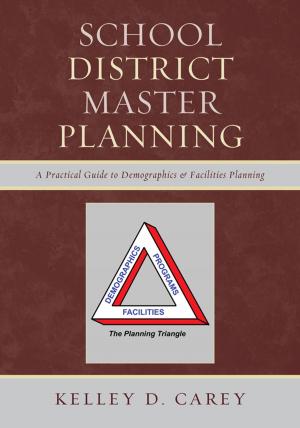Schools That Succeed, Students Who Achieve
Profiles of Programs Helping All Students to Learn
Nonfiction, Reference & Language, Education & Teaching, Educational Theory, Aims & Objectives, Administration| Author: | James Deneen | ISBN: | 9781607093428 |
| Publisher: | R&L Education | Publication: | January 16, 2010 |
| Imprint: | R&L Education | Language: | English |
| Author: | James Deneen |
| ISBN: | 9781607093428 |
| Publisher: | R&L Education |
| Publication: | January 16, 2010 |
| Imprint: | R&L Education |
| Language: | English |
Schools That Succeed, Students Who Achieve compares the academic achievements of students in the United States to those of students in other countries. Examining fundamental questions and educational issues, James Deneen identifies what all students should learn and discusses what American students currently learn. Deneen argues that failing schools can become successful by studying examples of successful schools with similar demographic features. To that end, he presents profiles of ten successful elementary schools, seven middle schools, ten high schools, and three highly diverse but successful school districts. The examples contain a sampling of economically disadvantaged as well as affluent and financially average school communities. This book provides demographic data, evidence of student achievement, and descriptions of programs that contribute to each school and district's success, illuminating what successful schools do to improve student achievement regardless of_or sometimes because of_their socioeconomic status. In the final chapters of this book, Deneen describes the assessment and evaluation of curricular changes and summarizes the policies and practices that work to create successful schools.
Schools That Succeed, Students Who Achieve compares the academic achievements of students in the United States to those of students in other countries. Examining fundamental questions and educational issues, James Deneen identifies what all students should learn and discusses what American students currently learn. Deneen argues that failing schools can become successful by studying examples of successful schools with similar demographic features. To that end, he presents profiles of ten successful elementary schools, seven middle schools, ten high schools, and three highly diverse but successful school districts. The examples contain a sampling of economically disadvantaged as well as affluent and financially average school communities. This book provides demographic data, evidence of student achievement, and descriptions of programs that contribute to each school and district's success, illuminating what successful schools do to improve student achievement regardless of_or sometimes because of_their socioeconomic status. In the final chapters of this book, Deneen describes the assessment and evaluation of curricular changes and summarizes the policies and practices that work to create successful schools.















